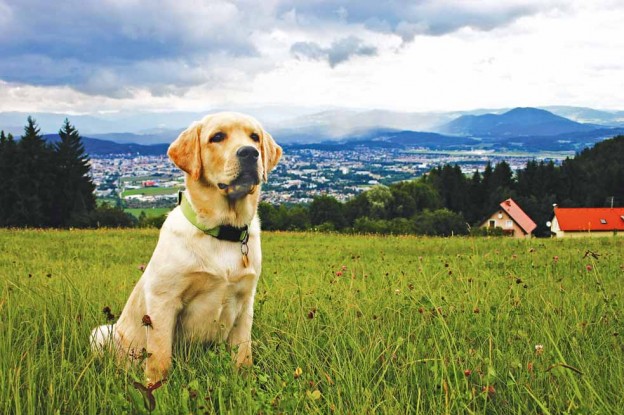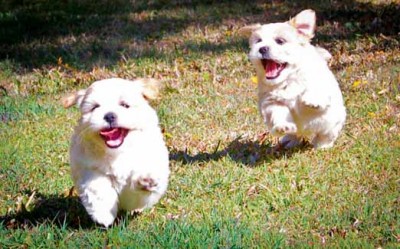
How many words should your dog understand and how can you increase their vocabulary? Tim Falk reports
The ability to effectively communicate with your dog is a skill every canine owner should have. From understanding his or her name and basic commands, through to more complex behaviours such as coming when called, you and your dog need to develop an understanding and trust that you can rely on in any situation.
But what are the words that every dog should understand? Sharon Nelson, dog trainer from Melbourne’s Manners for Paws Dog Training, nominates “come”, “stay”, “leave”, “wait”, “sit”, “drop” and “look” as essential words you should teach your pet.
“Teaching your dog to come, leave and stay are three important words every dog should learn as they could potentially save their lives,” Sharon explains.
“If you’re planning on taking your dog to an off-lead dog park or beach, most councils in Australia have laws that require off-lead dogs to be under effective control at all times. This means your dog needs to come to you when called. In the event that your dog starts running away in the opposite direction, you can safely call them back to you when they’ve learned this important life skill.”
Equally important is teaching your dog to stay. There are times when it may not be safe for your dog to come to you, such as if she’s ended up on the other side of a busy road. In this situation, if you’ve taught your dog to stay to an advanced level, you can tell her to stay safely in position until you collect her.
“The third important word is teaching your dog to leave,” Sharon continues. “If they were to pick up a piece of glass or a toxic puffer fish at the beach, when they know what the word ‘leave’ means, they will usually respond by spitting out what they have in their mouth, potentially saving them from cuts and toxins.”
Becky Thomas, dog trainer from Ultimate K9 on Queensland’s Sunshine Coast, nominates a couple of other important words for any dog’s vocabulary. The first is a command to eat, such as “eat”, “dinner” or “tucker”.
“It is extremely important that your dog has manners around food,” she says. “This is the beginning of food refusal. It starts off easy with them waiting for that command before they eat their dinner and then we can progress it further so your dog won’t take food from strangers or eat off the ground.”
The second is the “leave it” command, which Becky says falls under impulse control. “That simply means, just because your dog wants something, to say hello to another dog for example, doesn’t mean he can. We can generalise ‘it’ to mean whatever we like — the person/dog walking past, the cat running across the road, those birds in the park etc,” she explains. Finally, there’s one other command that Sharon says is critically important: getting your dog to focus on you. “Teaching your dog to look and give you focus is essential. If your dog is looking at you, they are not looking at anything else like other people, dogs or other animals,” she says.
“Once you have your dog’s attention, you can ask them to give you other behaviours and the more you reward your dog for looking at and checking in with you, the more they will offer this behaviour.”
Teaching time
Want to teach your dog a new word? Becky explains how. “There are quite a few methods when it comes to how to train a new skill. The most common one that pet owners use is a food lure,” she says.
Becky outlines the basic steps required to teach your dog the “drop” command, which is where the dog folds into a lying-down position.
- Start with the dog standing. Place a treat in your hand and hold it on the dog’s nose (without letting the dog have it).
- Slowly lower the food to the ground at an angle to end up between the dog’s feet. The dog should follow the food and fold into a drop.
- Once the dog is in position, you can let go of the treat and let him have it.
- Repeat step one until the dog is folding nicely into the drop.
“Now we introduce the command ‘drop’,” Becky says. “Say the command then lure the dog into position. Make sure to say the command before you present the treat to lure into position.
“Dogs learn through patterns, so we want to say the command then lure into position. If you are consistent with this, before you know it, your dog will be dropping when you say the command and won’t need to wait for the lure.”
The sky’s the limit
“Dogs are extremely intelligent and I feel we have only just started to tap into what they can achieve,” Becky says. She points to the famous example of Chaser, a Border Collie who has been proven to recognise more than 1000 words, as an indicator of what our canines are capable of.
From teaching skills such as those practised by assistance dogs to a range of advanced tricks, Becky says the sky really is the limit. “Just have fun and see what you come up with.”
Sharon says that dogs are capable of learning any amount of words, but their success relies entirely on them learning word association paired with an action. “You can also teach a dog in any language or made-up words for the same action or behaviour. For example, you could teach your dog to sit in English, Italian, Spanish etc — as long as you are consistent and repetitive with the training, your dog will learn very quickly,” she says.
And while it is generally easier for dogs to learn one-word commands such as “sit” and “drop”, you can definitely teach a dog to perform an action using a number of words such as “get the paper” or “where’s your ball?”. “Dogs can learn to respond to a chain of words, though the first word is the trigger for their initial response,” Sharon says.
Remember to make sure you are consistent with your training. Dogs learn through patterns, so keep your commands clear and consistent. Learn what motivates your dog, for example a particular treat or lots of cuddles, and reward her for doing the right thing.
Keep sessions short, sharp and focused, and finish each one on a high note. The key to success, Becky says, is to make training as enjoyable as possible for your dog. “Always make training fun — it should never be a chore,” she says.
Olive and George

Meet Olive and George, 10-year-old Maltese cross Poodle siblings. According to the owner of these two gorgeous pooches, Emma Boddington-Stubbs, “Olive is a lady and she is the smarter and more obedient of the two,” while “George is a real boy and is a creature of habit.”
But despite having two very different personalities, these two clever canines have both learned a long list of words. These are: “Sit, beg, come, roll over, high five, up, drop, downstairs, outside, cheese, chicken, chips, treats, yummies, haircut, hairdresser, vet, car, doggy day care, down, off, din dins (dinner), no, naughty, shower, toilet, night-night, bed, mat, walkies/walk (which we then used to have to spell w-a-l-k, but then they learnt how to spell, so we now have to say it backwards, ie klaw, if we are talking among ourselves). They also know eight family members’ names,” Emma says.
“A trainer we had in the early days encouraged us to repeat the words. So if Olive sits when asked, we say ‘good sit, Olive. Good sit. Good girl.’ We give them positive reinforcement through pats and treats. We just talk to them like they are little humans. I think that is how they have come to know so many words.”
Sit and drop
While “sit” and “drop” might not be as crucial to your dog’s safety as some other words, they are very important for introducing default behaviours. “Sitting is incompatible with jumping so when a dog learns that sitting results in rewards, they will offer this behaviour as a default,” Sharon says. “Similarly, teaching a dog to drop encourages them to be calm in certain situations, and teaching a large-breed dog to drop when a puppy is approaching is a lovely way for puppies to meet larger breeds without feeling too fearful of their size.”
This article was originally published in DOGSLife #142. Click here to subscribe to our pawsome magazine.
Here are just a few things that can make life with your dog a bit easier - see them now on our DOGSLife Directory



